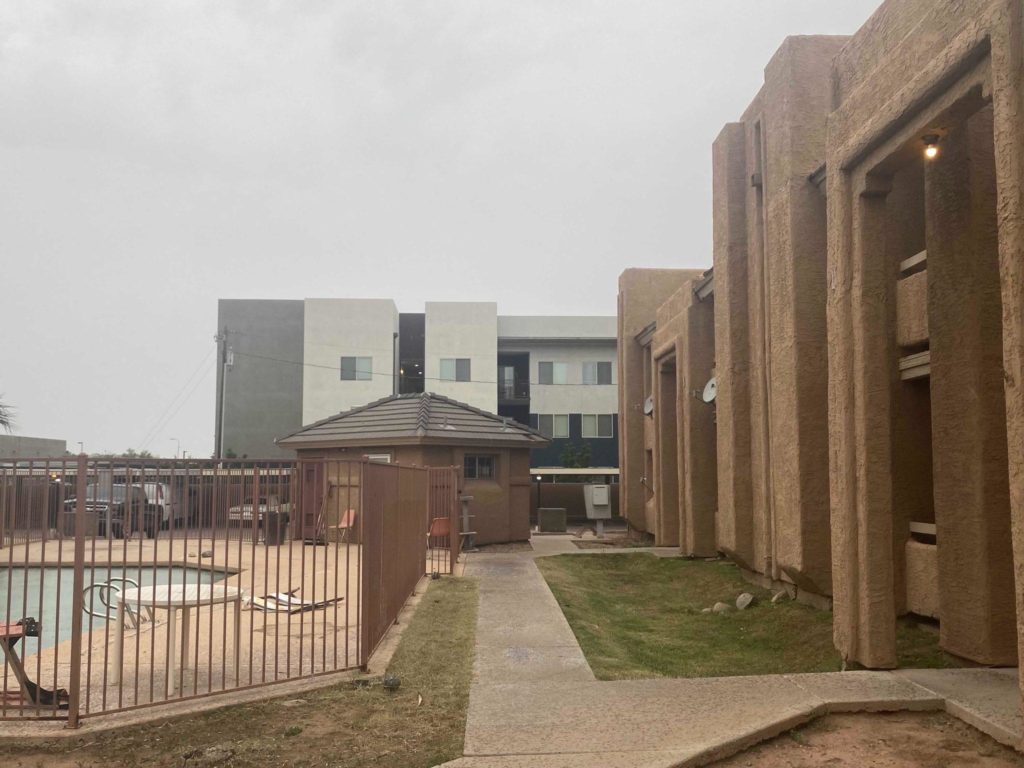The booming success of Arizona State University, its huge influx of students and record-breaking admissions have brought tens of thousands of new students from in and out of state to one city: Tempe. For longtime residents of the city and poor people, this means displacement and gentrification.
In the 1950s, Tempe was quiet, affordable, and home to a large Chicano population. Once just a small suburb east of Phoenix, its population has exploded. In 1970, the population was seven times what it was in 1950, and it has again tripled since 1970. Tempe encourages big businesses to settle in the city: it is home to Fortune 500 tech company Insight Enterprises, as well as State Farm, Carvana, LifeLock, and many others.
But the center of growth and development in Tempe has been Arizona State University, one of the largest public colleges in the country. The school pulls in billions of dollars, and counting all four of its campuses in the Phoenix area, it enrolls the most students of any school in the U.S.
The “success” of ASU could not have been achieved without displacing working-class people from their homes and leaving them to have to restart the already difficult journey of finding affordable housing. In other words, this process of gentrification is the parasitic tradition that has fueled the economic development of the city of Tempe for little more than half a century.
Silverwood Apartments, a picture of displacement
That’s the story of Silverwood Apartments, which came under new management, Market Edge Realty, in June of this year. New management doubled rent for its tenants seemingly overnight, and less than 30 days later tenants were forced to self-evict. The complex is a ghost-town with old eviction notices hanging on almost every door, former tenants’ items left behind in a hurry and some tenants still returning to retrieve things from their former homes.
The Silverwood Apartments sit in a predominantly non-white neighborhood east of downtown and ASU. The median income in the neighborhood is around $29,000, meaning many in the area are either at or below the poverty line (20% of the people in Tempe are in poverty, compared to 12% in the country). Nearby is a luxury apartment complex, constructed within the past few years, aimed at housing students. Before the recent rent hike, Silverwood Apartments was relatively affordable for the poor in Tempe — now, its rent is nearly the same as all nearby complexes.
The reason for the rent hike? There were no new fixtures or appliances added to the complex, no improvements to the moldy walls, weak and leaky ceilings, and no added square feet to any of the units — which are already very compact. Gentrification is the singular reason for this case of sky-rocketing rent. Its sole aim is to drive poor, working-class and non-white residents out of the area. Profits from complexes like these are an investment that all capitalists and wealthy landlords are willing to make, no matter what the cost.
One victim, of many, of gentrification in Tempe
The real cost of gentrification consists of many different stories. One is that of 69-year-old Genarosa Horca-Royal, the last remaining tenant in the Silverwood Apartments complex.
Genarosa has lived in her home for close to 20 years. Born in the Philippines, Genarosa has been a hard worker her entire life and always pays her rent on time.
“I was happy in here, I didn’t want to move out,” Genarosa explains. “I’ve never had this experience. I’ve been here in the United States, and I’ve been moving between different apartments, and I’ve never had a problem until this company.”
Market Edge Realty called the police on Genarosa on an occasion for not answering her phone and has constantly harassed her with a plethora of questionable late fees.
The frustration and sense of powerlessness she felt at the impending reality of losing her home nearly drove her to commit suicide.
With a monthly social security check of $1,000, where else can she go? “I don’t see where I’m going to sleep,” she explains. “One of the other senior citizens [that self-evicted] didn’t really worry because she has a truck that she can sleep in.”
Real estate billionaires, hungry for profits, ignore the costs
For Market Edge Realty and other profit-hungry corporations, nothing is more important than a large return on investment.
For them, it doesn’t matter that Genarosa was at this time still recovering from major and invasive abdominal surgeries — a concern she expressed to them several times. “They don’t understand that. Their only answer to me is ‘it’s not our problem’.”
Realty companies will spare no mercy for tenants, no matter what their age, condition, financial status, or story. Tenants become collateral damage in the demolition of any last remaining pockets of affordable housing. Genarosa’s story is the reality of this confrontation of the landlord versus the worker on the market — under capitalism, the landlord nearly always wins out.
However, communities of tenants can organize in tenant unions to help increase collective power and to provide some sort of leverage against landlords. They can fight for needed and necessary reforms to keep their homes and communities intact. And most of all, they can organize to destroy the system of capitalism that encourages and rewards the real estate billionaires that evict, gentrify, and displace. In the midst of a seemingly never-ending pandemic, and as the supreme court strikes down the eviction moratorium — this kind of organizing is needed now more than ever.
Feature image: 69-year-old Genarosa Horca-Royal, the last remaining tenant in the Silverwood Apartments complex in Tempe , Arizona, in her home.





